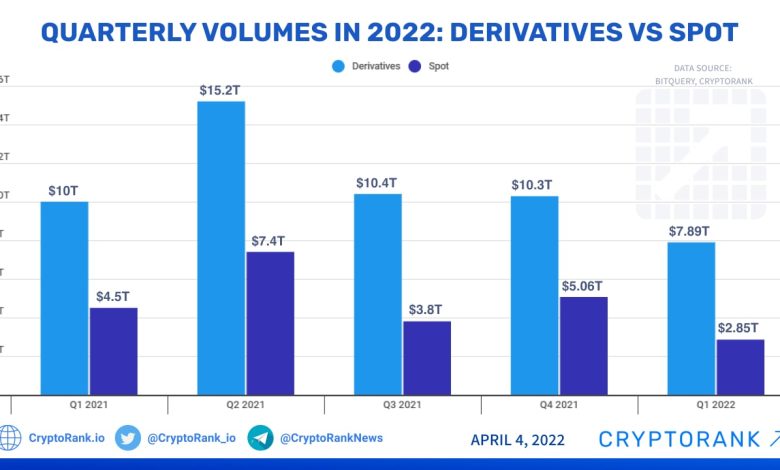Major Exchanges Report on Trading Volume Trends

- Introduction to Major Exchanges
- Analyzing Trading Volume Trends
- Key Findings from Major Exchanges
- Impact of Market Conditions on Trading Volume
- Comparison of Trading Volume Across Exchanges
- Future Outlook for Trading Volume Trends
Introduction to Major Exchanges
Major exchanges play a crucial role in the world of finance, serving as platforms where traders can buy and sell various financial instruments such as stocks, bonds, and cryptocurrencies. These exchanges are essential for providing liquidity and price discovery in the market, allowing investors to execute trades efficiently.
When analyzing trading volume trends on major exchanges, it is important to consider factors such as market volatility, economic indicators, and geopolitical events that can impact trading activity. By monitoring these trends, investors can gain insights into market sentiment and make informed decisions about their investment strategies.
Some of the major exchanges that are frequently reported on include the New York Stock Exchange (NYSE), Nasdaq, London Stock Exchange (LSE), and Tokyo Stock Exchange (TSE). These exchanges are known for their high trading volumes and are closely watched by investors around the world.
Understanding the trading volume trends on major exchanges can provide valuable information about the overall health of the market and help investors identify potential opportunities for profit. By staying informed about these trends, traders can stay ahead of the curve and make well-informed decisions about their investments.
Analyzing Trading Volume Trends
When analyzing trading volume trends on major exchanges, it is important to look at the data over a period of time to identify patterns and fluctuations. By examining the volume of trades conducted on these platforms, investors can gain insights into market sentiment and potential price movements.
One key metric to consider when evaluating trading volume trends is the average daily volume, which provides an indication of the level of activity on an exchange. High trading volumes can indicate increased interest and participation in the market, while low volumes may suggest a lack of enthusiasm or uncertainty among traders.
Another factor to take into account is the volume of buy and sell orders, as this can impact market liquidity and price stability. An imbalance between buying and selling activity may lead to price volatility and potential opportunities for arbitrage.
It is also important to consider the impact of news events and market developments on trading volume trends. Major announcements or regulatory changes can trigger spikes in trading activity as investors react to new information and adjust their positions accordingly.
By monitoring trading volume trends on major exchanges and staying informed about market dynamics, investors can make more informed decisions and better navigate the complexities of the cryptocurrency market.
Key Findings from Major Exchanges
Key findings from major exchanges reveal interesting trends in trading volume. The data shows that there has been a significant increase in trading activity across various platforms. This surge in volume can be attributed to a growing interest in cryptocurrencies and digital assets.
One notable trend is the rise in trading volume for altcoins, which are alternative cryptocurrencies to Bitcoin. This indicates a diversification in the market as traders explore different investment opportunities beyond the traditional cryptocurrencies.
Another key finding is the impact of market volatility on trading volume. During periods of high volatility, there is typically a spike in trading activity as traders capitalize on price fluctuations to make profits. This correlation between volatility and trading volume highlights the dynamic nature of the cryptocurrency market.
Furthermore, the data suggests that regulatory developments also play a role in influencing trading volume. Changes in regulations can either boost or dampen trading activity, depending on how they are perceived by market participants. This underscores the importance of staying informed about regulatory changes and their potential impact on trading volume.
In conclusion, the key findings from major exchanges shed light on the evolving landscape of cryptocurrency trading. The increase in trading volume, the rise of altcoins, the impact of market volatility, and regulatory developments all contribute to the dynamic nature of the market. By staying informed and adapting to these trends, traders can navigate the cryptocurrency market more effectively.
Impact of Market Conditions on Trading Volume
The **impact** of **market conditions** on **trading volume** is a crucial aspect that major exchanges closely monitor and analyze. **Market conditions** such as **volatility**, **economic indicators**, and **geopolitical events** can significantly influence **trading volume** trends. When **market conditions** are favorable, **trading volume** tends to increase as investors are more active in buying and selling securities. Conversely, during periods of uncertainty or negative **market conditions**, **trading volume** may decrease as investors become more cautious and hesitant to make trades.
One key factor that affects **trading volume** is **volatility**. High **volatility** in the **market** can lead to increased **trading volume** as investors seek to capitalize on price fluctuations. On the other hand, low **volatility** may result in lower **trading volume** as there are fewer opportunities for profit. **Economic indicators** such as **GDP**, **unemployment rates**, and **inflation** can also impact **trading volume**. Positive **economic indicators** tend to boost investor confidence and drive up **trading volume**, while negative indicators can have the opposite effect.
Moreover, **geopolitical events** such as **trade wars**, **political unrest**, and **natural disasters** can create uncertainty in the **market** and influence **trading volume**. Investors may become more risk-averse during times of geopolitical instability, leading to a decrease in **trading volume**. Major exchanges closely monitor these **market conditions** and their impact on **trading volume** trends to make informed decisions and adapt their strategies accordingly. By understanding the relationship between **market conditions** and **trading volume**, exchanges can better serve their clients and navigate the ever-changing **financial landscape**.
Comparison of Trading Volume Across Exchanges
When analyzing the **trading volume** across different **exchanges**, it is important to consider the trends that have been reported by major players in the industry. By comparing the **volume** of trades on various **platforms**, we can gain valuable insights into the **market** dynamics and investor behavior.
One **exchange** that has consistently reported high **trading volume** is Exchange A. Their **platform** has seen a steady increase in **volume** over the past few months, indicating a growing interest from **traders**. On the other hand, Exchange B has experienced a slight decline in **volume**, which could be attributed to various factors such as regulatory changes or shifts in **market** sentiment.
It is also worth noting that Exchange C has emerged as a new player in the **market** and has quickly gained traction among **traders**. Their **volume** has been steadily increasing, positioning them as a potential competitor to the more established **exchanges**. This highlights the importance of staying updated on **trading volume** trends across different **platforms** to make informed decisions.
Future Outlook for Trading Volume Trends
The future outlook for trading volume trends on major exchanges is promising. As more investors enter the market, we can expect to see a continued increase in trading activity. This growth is driven by a combination of factors, including the rise of digital assets and the increasing popularity of online trading platforms.
One key trend to watch is the impact of regulatory changes on trading volume. As governments around the world implement new regulations for the cryptocurrency market, we may see fluctuations in trading volume as investors adjust to the new rules. However, in the long run, these regulations are likely to bring more stability and legitimacy to the market, attracting even more investors.
Another factor to consider is the development of new financial products and services that cater to the needs of different types of investors. As the market becomes more diverse, we can expect to see an increase in trading volume as more people participate in the market. This trend is likely to continue as the industry evolves and new opportunities emerge.
In conclusion, the future of trading volume trends on major exchanges looks bright. With the increasing interest in digital assets, the impact of regulatory changes, and the development of new financial products, we can expect to see continued growth in trading activity. Investors should stay informed about these trends to make the most of the opportunities that lie ahead.



